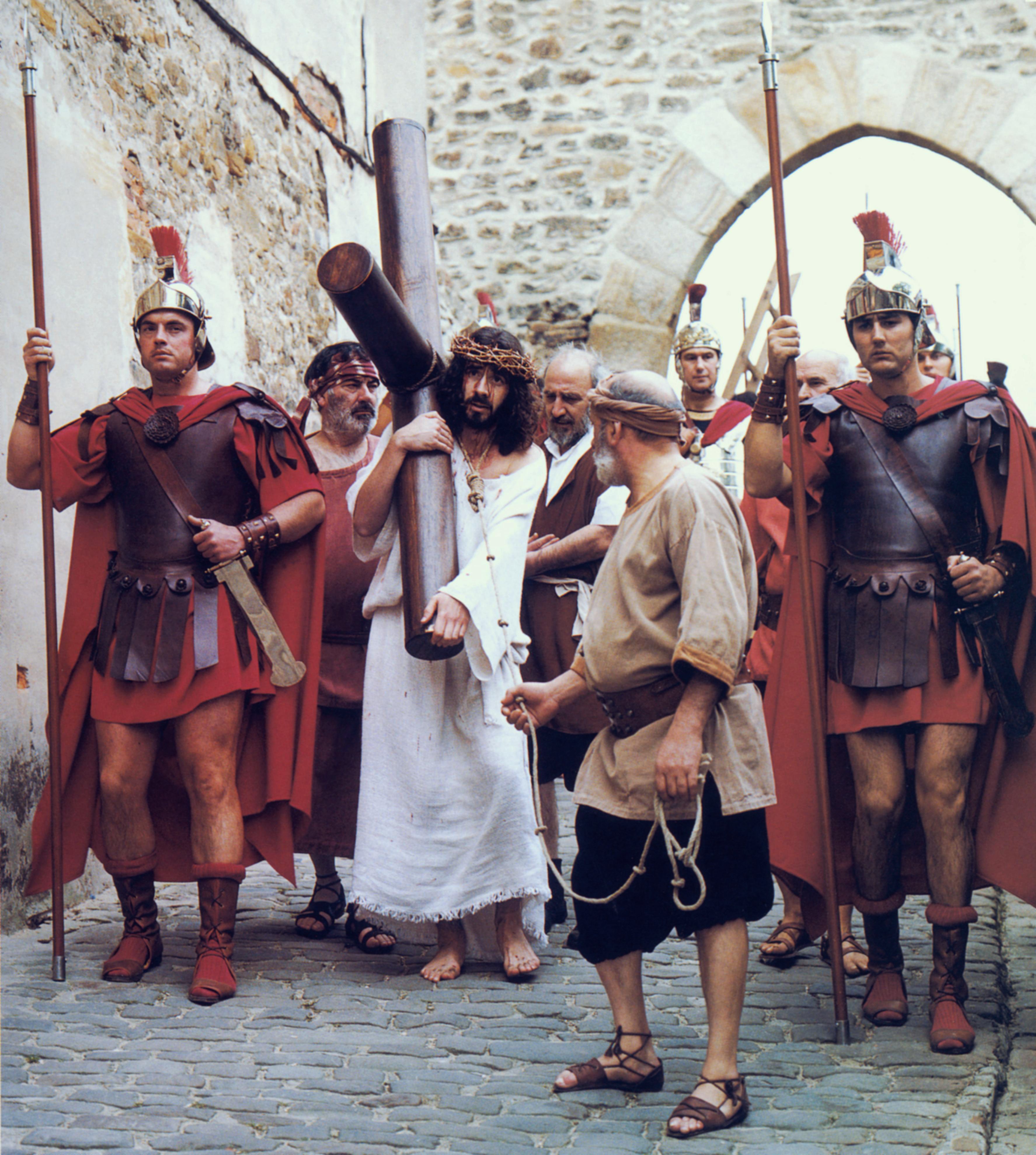
Good Friday procession. Zeanuri (Bizkaia), 1920. Felipe Manterola Collection. Labayru Fundazioa Photographic Archive.
Two feasts dedicated to the Holy Cross mark the most intense period of agricultural work in the traditional calendar. On May 3, the Finding of the Holy Cross, blessed hazel crosses were planted in the newly cultivated fields for protection. Crop harvest began five months later, on September 14, the Exaltation of the Holy Cross, and preparations were undertaken for grape harvest. From Holy Cross to Holy Cross, “De Santa Cruz a Santa Cruz” as shepherds in Álava would say, was the more appropriate season to pasture the flock in the mountain. That is the time of the year with longer and warmer days.
Out of the natural cycle there is an especially sacred day devoted to the Cross, the Christian symbol par excellence: Good Friday, known in Bizkaia Basque as Bariku Kurutzeko, literally “Holy Cross Friday”. On such a day Christians adore and kiss the Cross during the afternoon religious celebration held in church. Prior to this act of personal veneration of the Holy Cross, the passage from the gospel relating the scenes of the Passion of Christ is read: trial, blasphemy conviction, death sentence and execution on the scaffold of the cross.
The solemn reading of the accounts of the Passion has a dramatic character. It is conducted by three different readers as a dramatis personӕ: one plays the role of the chronicler and narrates the action; another recites the part of the various characters (members of the Sanhedrin, Pilate, crowd, centurion…); and a third, who presides at the liturgy, pronounces the words uttered by Jesus. The origins of medieval drama actually lie in the dramatised recitation of Christ’s Passion in the view of some.

Photograph taken from the work Balmaseda: Su pasión viviente [Balmaseda: Its living passion]. Bilbao, 2002.
The aforementioned dramatisation is not limited to the interior of the church. After the religious service the congregation marches out carrying images from the Passion narratives, the coffin with Christ’s reclining body prominent among them. Religious chants related to the time lived are sung during the procession.
Likewise, it should be noted live performances of the Passion, or enactments of the Stations of the Cross, also known as Via Crucis, are staged by townspeople in a number of places throughout the Basque Country, town squares, streets and roads serving as setting. Worth mentioning are, among others, the living passions enacted in Balmaseda, Berango, Arkotxa (Zaratamo) and Durango in Bizkaia; Heredia, close to Agurain, in Álava, where the custom has recently been revived; Tudela and Andosilla in Navarre; and Segura and Hondarribia in Gipuzkoa, which have a long tradition.
Ander Manterola – Etniker Bizkaia – Director of the Ethnographic Atlas of the Basque Country
Translated by Jaione Bilbao – Language Department – Labayru Fundazioa